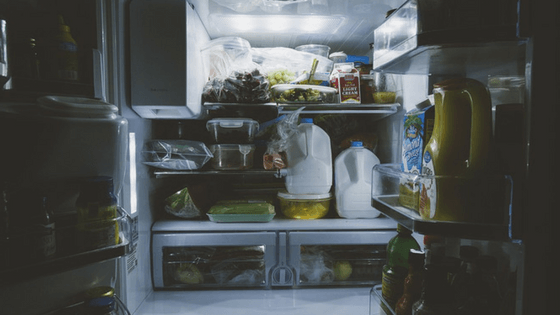
The refrigerator is one of the hardest working appliances in your home. It’s constantly running and frequently “manhandled” by your family. Yet, all it usually receives is a cursory wipe down of the handles at the most. When you finally clean the fridge thoroughly, it’s probably motivated by a spill.
Refrigerator organization has so many benefits. Your food will be properly stored and you’ll have easy access to the things you use most.
Organizing the fridge also goes a long way to saving you money. No more forgotten food spoiling at the back of a shelf. No more buying duplicates of something you already have. Crowded shelves are also bad for energy efficiency so there’s another reason to clean your fridge, if you needed one.
Here are five tips you can use to organize the refrigerator in your home.
Getting Started With Refrigerator Organization
This post contains affiliate links. If you click and make a purchase, there’s absolutely no extra cost to you. Read my full Disclosure Policy here.
Deep Clean The Fridge Interior
Before you organize your refrigerator, you should clean it first. The best time to do this is right before you go grocery shopping. At that time, the fridge is as empty as it’s going to get and this will make your life much easier.
Remove everything from the fridge. You may choose to do this in sections or all at once. Just make sure to work quickly to minimize the amount of time your food is sitting out. I prefer removing everything at once so I can clearly see what I have.
Wipe down each shelf and drawer using a 50/50 solution of white vinegar and water. Soapy water will also do nicely. If a shelf is extra grimy, take it out of the refrigerator and wash it off at the sink. Afterwards, dry the moisture off thoroughly.
Line your shelves and drawers with waterproof liners or plastic. This makes cleaning a breeze if there is a spill in the future.
Place a box of baking soda or a container with activated charcoal inside the refrigerator to eliminate odors and keep a fresh scent.
Clean The Fridge Exterior
Check the manufacturer’s recommendations for cleaning solutions for the exterior of your refrigerator. Then, wipe down the outside of the fridge especially the handles and the areas around them. Clean the rubber seal around the door with an old toothbrush and some of the cleaning solution used on the inside. Use a soft damp cloth to clean the top of the fridge which gets very dusty.
Use your vacuum cleaner to remove dust that built up on the coils at the back of your refrigerator. Some models may have a panel that covers the coils. Simply, remove the panel and replace it when you’re done cleaning. Clearing the coils of dust can actually reduce the amount of energy your fridge uses therefore lowering your utility bills.
Refrigerator Organization Tips
1. Group Items
Now, move on to organizing the fridge. Discard any expired, spoiled or just plain questionable food and wipe off dirty condiment containers. Group like items together so they’re easy to find.
2. Use Refrigerator Storage Containers and Labels
I love using refrigerator storage bins to corral items like bags or pouches. Bins prevent items from falling over constantly and you will be surprised at the amount of space you save by organizing cans or other food containers in them.
Label the baskets and refrigerator shelves if there are other people in your household. Just because you know where everything goes, doesn’t mean that everyone else will. Labels remove the guesswork and help to maintain your organization system.
3. Make Items Easily Accessible
A Lazy Susan or turntable is a great way to store smaller items that tend to get lost in the back of the fridge like condiments. It also makes items easily accessible because you can spin it around to see what you have. No more shifting things out-of-the-way to reach in the back.
4. Where To Put Food
Place leftovers, ready-to-eat foods e.g. yogurt and drinks on the upper fridge shelves. Store cooked food in containers labelled with the expiration date at the front of the shelf. This way you can see what needs to be eaten as soon as possible. Put more recently cooked food behind older meals.
The temperature and humidity of crisper drawers are designed to store vegetables and greens. Wash your leafy greens, dry off as much moisture as possible with a clean towel or salad spinner. Then, store them in a container lined with dry paper towels. The paper towels absorb any moisture and prolong the life of your greens.
5. What To Avoid
Don’t overcrowd the fridge because cold air needs to circulate in order to slow down food spoilage. The temperature of the refrigerator door fluctuates the most so avoid putting dairy products there.
Place raw meat on the bottom shelf in a container or bowl to prevent drips contaminating other food.
Avoid placing bananas and apples near to uncovered produce. The gases emitted by these fruits speed up ripening of other fruits and vegetables.
Refrigerator organization saves you time and money. You’ll know exactly what’s inside your fridge and where everything is.
Make sure you also check out:
Did you enjoy this post? If so, don’t forget to share it on Pinterest!



